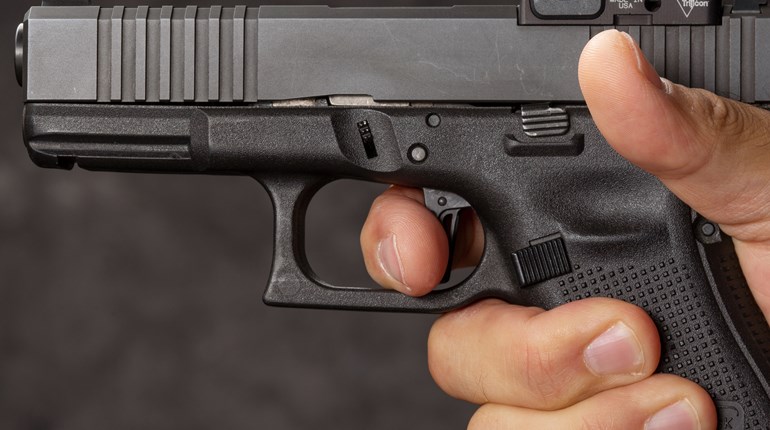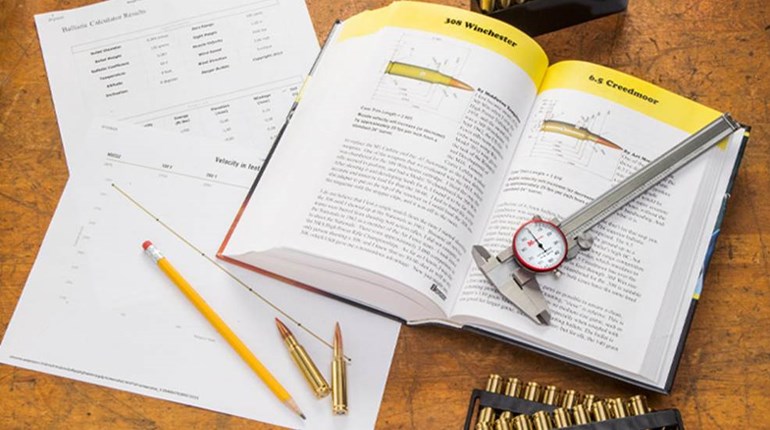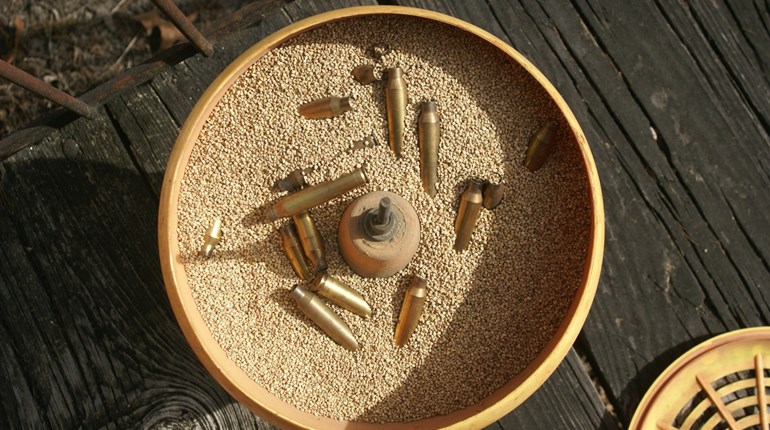
Sometimes, it just looks so damn easy. In the linked video, you see an obviously fine athlete, actor Keanu Reeves, brought to a very fine edge by one of the finest shooters and quite apparently teachers ever—über champion Taran Butler. And the results are at least impressive, and perhaps staggering.
Now, the bad news: Some of us could practice forever, and quite likely never be this good. Furthermore, there’s no point in whining about it.
You don’t, however, throw in the towel with this revelation, because the flip side is one of the greatest advantages of shooting as a pursuit: Few enterprises reward diligent practice and proper technique more generously, nor display such “physical democracy.” By this, we mean the ability of the incredibly varied human instrument to compensate for any deficiencies with other aptitudes, and level the overall field to an occasionally astonishing degree.Few enterprises reward diligent practice and proper technique more generously than shooting, nor display such “physical democracy.”
Nothing could be more nearly the essence of the “Three P’s” (Press, Press, Press) than such trading of your personal advantages in, and disadvantages, out.
In Part I, our first “Press” defined a method of bringing the hands/palms together around the grip of the pistol. The goal is to trap the majority of recoil energy forward of the elbows where it helps keep a semi-auto cycling, and more rapidly settles the sights for any subsequent shot on any action type. Executing this is made easier by resisting the temptation to push either arm out straight and locking the elbow: While you will absolutely see locked elbows work for some very good shooters, it’s generally a disadvantage (understand the dynamics better here). Pull that pistol in a little by bending the elbows and pressing those palms together, rather than gripping tighter with the fingers. Cap the advantage by bringing the sights up to the eyes, and not the head down—and especially not tilted—to the sights.
Part II dealt with pressing the thumbs toward the target; the second “Press.” The mechanics here are more straightforward, as well as pointedly more universal: Very few up-to-date techniques vary from this. If nothing else, it reduces felt recoil by getting “more of you” on the pistol.
Two concepts are crucial. First, don’t “bury” the strong hand thumb by grasping over it with the weak hand. Admit it or not, this is a finger-gripping architecture, and inferior in strength, rigidity and repeatability to “first P” pressing of the palms. Instead, get the fleshy base of the weak side thumb and base of the hand on the grip, pointing the thumb downrange and, not coincidentally, at the target.
This puts the strong side thumb above the weak side, and ushers in the second aspect of “P” two—press that strong hand thumb downrange too. A lot of tension is neither necessary nor helpful (pick up a one-pound object between thumb and fore-finger, and you’ll have a good idea of how much pressure is plenty). The benefits are pervasive. This posture forward tensions the web of the hand against any beavertail and resists recoil rotation with surprising power at the wrist, which in turn rapidly restores sight picture. It also accesses the accurate “pointing” reflex of the strong side thumb—again, right at your target. Sight picture processing is dramatically speeded by making any visual corrections of aim several orders of magnitude smaller.
This posture forward tensions the web of the hand against any beavertail and resists recoil rotation with surprising power.Now, we hope you see that the singular goal of the predecessor “P”s is to free the literally surgical delicacy of the fingers for the job to which they are best suited: Pressing the trigger, and the final “P.” We also suggest that the word “press” matters most as a word in this context, because it’s the only mallet we have to beat down a couple of late stage spoilers of a satisfactory shot, and which negate our hard work on the other two “P”s.
Firearms instructional tradition holds that we “squeeze” the trigger in the brief interval between initiating and actually tripping the shot, but this isn’t what happens if you watch the action of the hand in a preponderance of (and particularly, new) shooters. When these folks execute the concept of the squeeze, you uniformly see all the knuckles whiten as the fingers of both hands collapse in unison (the weak side due to sympathetic nervous action) toward the centroid, so to speak, of the hands, and directly to the grip of the firearm. Because these squeeze vectors are along multiple and obviously different axes, it isn’t surprising that the sights de-align, and the shot correspondingly degrades.
When you watch an expert “squeeze,” this isn’t what you see. The most easily observed example occurs when such a shooter executes a high precision shot at a distant target: The only thing that moves is the index/trigger finger. Consciously or not, they isolate the “press” of the trigger along a single, directly rearward axis, and the sights remain aligned. Multiple rapid shots that land within freakishly, annoyingly tiny dispersions offer the same proof that this must be what is occurring, but are generally harder to observe—except as a result—in a relative maelstrom of other movements.
If this sounds a little overwhelming, never fear. While we would (good-naturedly) argue word choice with past handgun titans, we emphatically praise and endorse their “how-to” for your own perfect third “P”—dryfire.The singular goal of the predecessor “P”s is to free the literally surgical delicacy of the fingers.
Our only add is “slowly;” even very, very slowly. Seriously: We recommend dryfire trigger work should always be done as slowly as possible. While the explanation and justification are long-winded, here’s the short version. In a gravity-governed world, we get wired to a “slightly overcoming” model of muscular action in that world: We walk, breath, indeed perform hundreds of other actions on this model, and quite literally without conscious thought. A singularly unhelpful neuromuscular corollary also seems to develop over time. The more resistance we encounter, the more rapidly we tend to overcome.
Now overlay these implications on trigger press. They all but guarantee a press-rate change (an acceleration for you Sir Isaac Newton wonks, us included), and like “squeezing” the trigger, they result in a mis- or un-aligning vector acting at an utterly crucial moment in the shot—the mechanical tension stack-up that occurs as the trigger “breaks.” It’s true that light, precise triggers reduce this problem, but they cannot eliminate it.
Going as slowly as possible in practice fixes this, though you’ll essentially have to trust us here. First, we believe it corrodes the “slightly overcome” reflex by making the application of pressure conscious (again). Don’t worry about this sabotaging speed, either, though our reassurance is again subjective: Rapid actuation seems to take care of itself based on the situation, but now without your retrained trigger finger inflicting those off-axis, aim-sabotaging “jerks.”
As you consider how “The P’s” may be useful to improve your own bedrock skills, we go back to our opening. Physical attributes, as Reeves and Butler so clearly demonstrate, have a huge impact on shooting well, and it would be silly to suggest that one technique will absolutely work for everyone. Some adaptation is likely necessary to accommodate physical differences. Our distillation into simple “Press, Press, Press” is meant as much to winnow out the certainly unhelpful—or downright destructive—as to articulate those of equally certain benefit. If you submit to being guided by results, though, we believe you’ll find them as useful and versatile as we have, and over a long time.
Now, Press, Press, Press and Carry on!


































